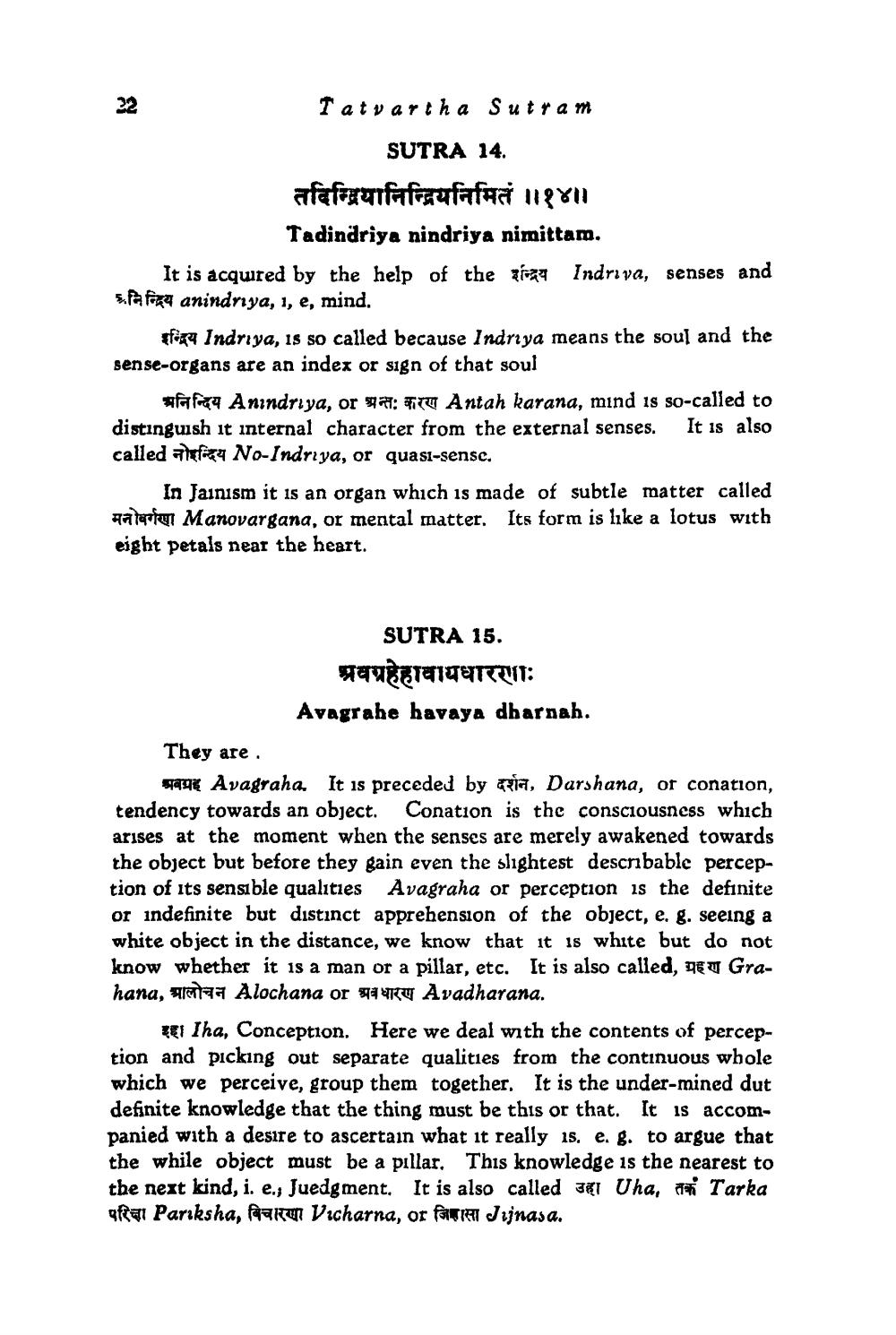________________
Tatvartha Sutram
SUTRA 14. तदिन्द्रियानिन्द्रियनिमितं ॥१४॥
Tadindriya nindriya nimittam. It is acquired by the help of the rigu Indriva, senses and spa fara anindnya, 1, e, mind.
foxy Indriya, is so called because Indriya means the soul and the sense-organs are an index or sign of that soul
#fafa Anindriya, or 42: Antah karana, mind is so-called to distinguish it internal character from the external senses. It is also called a 4 No-Indriya, or quasi-sense.
In Jainism it is an organ which is made of subtle matter called Hatertur Manovargana, or mental matter. Its form is like a lotus with eight petals near the heart.
SUTRA 15. प्रवग्रहावायधारणा:
Avagrahe havaya dharnah. They are.
sage Avagraha. It is preceded by asia, Darshana, of conation, tendency towards an object. Conation is the consciousness which arises at the moment when the senses are merely awakened towards the object but before they gain even the slightest describable perception of its sensible qualities Avagraha or perception is the definite or indefinite but distinct apprehension of the object, e. g. seeing a white object in the distance, we know that it is white but do not know whether it is a man or a pillar, etc. It is also called, gEU Grahana, alta Alochana or 0 Avadharana.
El Iha, Conception. Here we deal with the contents of perception and picking out separate qualities from the continuous whole which we perceive, group them together. It is the under-mined dut definite knowledge that the thing must be this or that. It is accompanied with a desire to ascertain what it really is. e. g. to argue that the while object must be a pillar. This knowledge is the nearest to the next kind, i. e., Juedgment. It is also called act Uha, # Tarka परिक्षा Pariksha, विचारणा Vacharna, or जिज्ञासा Jijnasa.




